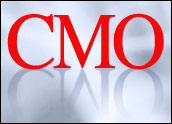
Configure/Price/Quote (CPQ) tools provide companies technology-enabled processes by which selling organizations manage their opportunity-to-order (or lead-to-win) methodology with automated tools that impact the speed and accuracy of developing quotes, proposals, contracts and products.
As sales organizations endeavor to escape the constricted economy of the 2009 recession, one of their most significant barriers is stagnant progress regarding bringing their sales cycle under control. Recent Aberdeen research published for “Inside Sales Enablement: Let Them Drink Coffee!” (December, 2010), reveals that not only did under-performing companies see a year-over-year increase in their sales cycle of 12 percent, but even the Best-in-Class — or top 20 percent of performers among over 500 companies surveyed — experienced a slight (1 percent) lengthening of their own lead-to-win time frame.
As top-performing selling teams continue searching for ways to reduce this window as well as to increase their win/loss “batting average,” the use of configure/price/quote or CPQ tools holds potential promise for better sales team performance.
Aberdeen research conducted in March, 2010, for the benchmark study of 441 corporate sales teams (“Automating Lead-To-Win: Shrinking the Sales Cycle and Focusing Closers on Sealing More Deals” — May, 2010), included 37 companies currently deploying CPQ technology, and analysis shows that these organizations are realizing concrete performance advantages over other survey respondents in measures such as proposals delivered by each rep per month and average deal size.
Business Context
CPQ users that have adopted technology that allows for more efficient and automated processes in creating the proposals, quotes or products are 65 percent more likely than other companies to recognize the efficiency issues plaguing sales teams that provide configurable products or services. They also see the value of understanding the business needs of prospects already being “romanced” but not closed, and are more sensitive to competitive pressures.
The efficiency gains of CPQ use add measurable value to the task at hand for sales organizations, which focus on relieving the business pressures faced by organizations.
Interestingly, non-CPQ users are twice as likely to be concerned with insufficient average deal size or contract value averages. These companies that are not utilizing CPQ understandably feel the stress of “working harder, not smarter” and can benefit from the economies of scale offered by CPQ deployments, as well as more efficiently trot out up-sell, cross-sell or other deal-enlarging features for their prospects and customers that can drive the Average Selling Price (ASP) higher — and ostensibly create more corporate profit.
The capabilities that users of configure/price/quote solutions deploy to support overall sales effectiveness focus primarily on organizational management and processes. Organizations committed to sales performance management understand the importance of using metrics to evaluate individual and team behavior and accomplishments; CPQ use and its incumbent efficiency gains can be used as KPIs toward this goal.
The simple automation of reminding sales teams of customer contract expiration or renewal dates, too, is a process more valued by CPQ-enabled companies that can proactively contact a customer, beat their competition to any relevant deadlines, and rapidly configure a re-order or extension of their product/service delivery.
Understanding a customer’s needs, finally, is supported by CPQ solutions that include a data entry modality that not only helps capture this information vital to a successful sale, but also promotes the best practice of promoting better listening among sales reps eager to close their deal.
In Conclusion
It is not difficult to look at any sales representative who starts from scratch every time he or she needs to create a proposal, quote or contract, and wonder why such manual activity is still considered acceptable in any contemporary business selling environment.
Sales teams adopting CPQ technologies recognize this relatively straightforward premise, and as such are yielding better business results as a consequence of their investment. Ongoing Aberdeen lead-to-win research will continue to examine how enabling technologies and business best practices differ among the various levels of sales performers within this data set.
















































